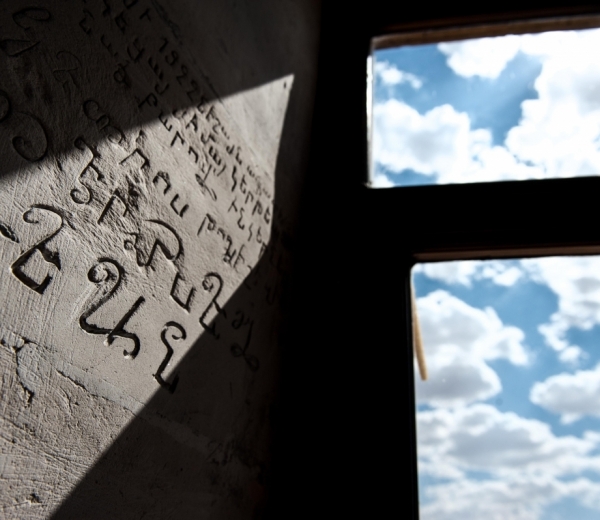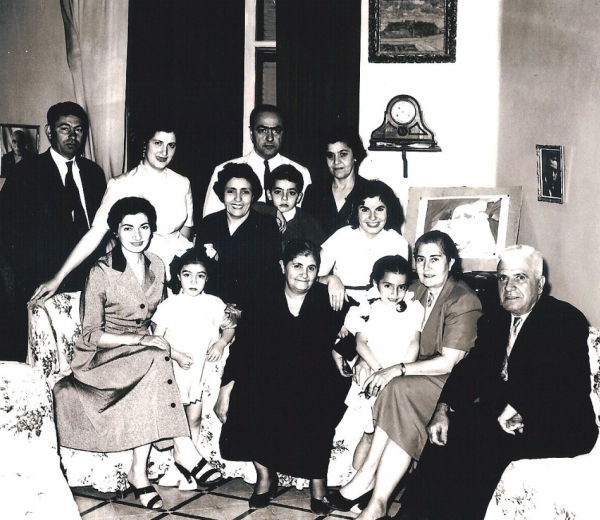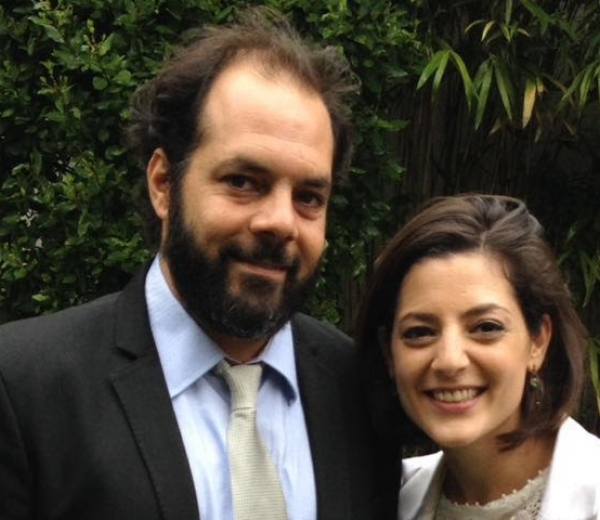Gariné and Norair Chahinian
Submitted by global publisher on Fri, 08/12/2016 - 13:19
English
Intro:
Some voices cannot be silenced and some messages reach their addressees many years after they are sent. This is what happened to a young Brazilian architect and photographer of Armenian descent Norair Chahinian, who went on a journey to his homeland and discovered a message that awaited him at this ancestral home in Urfa for almost 100 years.
Weight:
-10 010
Story elements:
Text:
Some voices cannot be silenced and some messages reach their addressees many years after they are sent. This is what happened to a young Brazilian architect and photographer of Armenian descent Norair Chahinian, who went on a journey to his homeland and discovered a message that awaited him at this ancestral home in Urfa for almost 100 years.
Text:
Norair Chahinian was born in São Paulo, Brazil. In 2012 he took a trip to Urfa (present-day Turkey), his ancestors’ village, in search of his roots. The house that once belonged to the family of his great-grandfather Harutiun is now a boutique hotel called Cevahir. At reception, Norair asked to stay in the room "with the note written in Armenian." When he entered the room, he saw the following message carved on the wall: "In 1922, I arrived at Nshan Efendi's house. I stayed here for 25 days. I am now moving to Aleppo. Goodbye, my friends. Those who read this message from Bedros, remember me. Signed: Der... ian."
One hundred years ago, this building belonged to the Der Bedrossians – Kevork and Yeghisapet and their eight children: Nshan, Aghajan, Krikor, Vartuhí, Hagop, Kayané, Bedros and Harutiun, a family of tailors and merchants. They had several shops and distributed fabrics and silks wholesale in the region’s cities. The family also owned vineyards northwest of Urfa and in a nearby village called Golenje, where they employed villagers to raise sheep and grow crops. They lived in this large two-story house and frequently made donations to the local church.
Nineteen fourteen marked the beginning of World War I. Having allied with Germany, the Turkish state began “recruiting” men for the army. Young men were taken by force and men over 45 were transferred, without weapons, to Karakopuru, two hours away from Urfa. Those who paid 45 gold Ottoman coins would be released; Harutiun and Bedros Der Bedrossian were able to pay and remained in the city. Officers also captured 18 intellectuals to make sure the village had no leaders left; among them was Aghajan, the brother of Bedros and Harutiun. Without much delay, all 18 were brutally murdered. A genocidal policy was being implemented and the family made a pact: if forced to separate, whoever had the chance to return to the house would leave a message on the wall of the small room on the second floor. Thus in 1922 Harutiun wrote his words on that wall, and the message was found by his great-grandson almost 100 years later.
Image:

Text:
|
The 95-year-old inscription Norair saw at his ancestors’ house in Urfa |
While the violence ravaged Urfa, Harutiun stayed in a nearby village. He collected 200 bags of wheat to take to Aleppo to sell, but he could not get there due to a train malfunction. He had heard about the atrocities that were taking place in Urfa and asked his neighbor, the Kurdish Hussein Pashá, to help him hide or reach Aleppo. Hussein proposed that Harutiun give him the wheat and, in exchange, he would be taken to Aleppo.
"Our story is one of many that ended well thanks to a person who made survival possible. In our case, it was with the help of Hussein Pashá, a good and righteous soul, that all these future generations became possible! ‘Thanks' does not seem like much, but it comes from deep within our hearts 100 years later," says Gariné Chahinian, Norair's sister and Harutiun's great-granddaughter.
In Urfa, Bedros met Danish missionary Karen Jeppe who was part of Johannes Lepsius's German mission and, from 1903, was responsible for running the German orphanages in the city. They had met previously as Bedros had donated to the institutions she directed. In the midst of the attacks, Jeppe sheltered him at her house, where he hid for a long time together with other Armenians. Thanks to her and his other contacts, Bedros managed to escape to Syria. Later, Harutiun and his fiancée Eliza were also able to get there. Noyemzar, Bedros's fiancée, arrived at Aleppo thanks to Jacob Kuntzler, director of the German orphanage.
Image:

Text:
|
Harutiun and Elisa (center, seated) with their son Yervant (standing, center left) and children of their relatives orphaned by the Genocide |
A new beginning
Of the eight siblings making up the large Der Bedrossian family, only two remained alive by the end of the war: Bedros and Harutiun. Urfa came under British control and the massacres stopped. Though all the houses were looted and many reduced to rubble, many Armenians returned to their homes, including Bedros and his wife. Harutiun returned to Aleppo as he had his business and some relatives there. But peace did not last long. There were new massacres and many Armenians were killed. Thus, in February 1923, Bedros and Noyemzar fled to Aleppo once again. None of them ever returned to Urfa.
In Aleppo, the Der Bedrossians were very active in community life. Harutiun and Eliza took part in church activities and were members of the AGBU. Bedros and Noyezmar founded the Ladies Association of Urfa in Aleppo and worked jointly with other organizations, such as the AGBU and the Armenian Relief Society. The couple had five daughters. Three of them settled in Philadelphia and the other two settled in Lebanon, but in December 1972 they too moved to the United States.
Image:

Text:
|
Christmas at Avedis’ and Anahit’s house, Harutiun and Elisa seated on the right, 1958 |
Anahit, one of Harutiun and Eliza’s daughters, married Avedis Chahinian, an art student. He was a photographer and had a studio in Aleppo. They had three children: Hrair, born in 1947, Catherine and Nairí. Harutiun met his grandchildren and enjoyed life with them. He died at 68 of a heart attack.
Avedis Chahinian had two sisters: Vartanush, who lived in the United States and Hatoun, who lived in Brazil. In 1963, he wanted to join one of them, regardless of where they lived. He wrote a letter to each, sending both on the same day. The response that arrived first would be where he would spend his life: São Paulo, Brazil.
The Chahinians opened a bookshop in Brazil. Avedis was part of the committee that founded the AGBU in São Paulo. His children were also involved in local church activities and social gatherings. To continue promoting Armenian culture, the AGBU opened a school and Hrair was part of the founding committee. There he met Liliana Der Harourounian and, some time later, they had two children, Norair and Gariné. "As most Armenians in the diaspora, my family adapted to a new country and did it without forgetting their origins. São Paulo is a great city to grow up in. It’s cosmopolitan and there are no cultural prejudices; it has allowed the Armenian community to find its place and express itself," says Gariné.
The story is verified by the 100 LIVES Research Team.
Subtitle:
Brazilian Armenians receive a message sent 100 years ago
Story number:
25
Author:
Eugenia Akopian
Header image:

